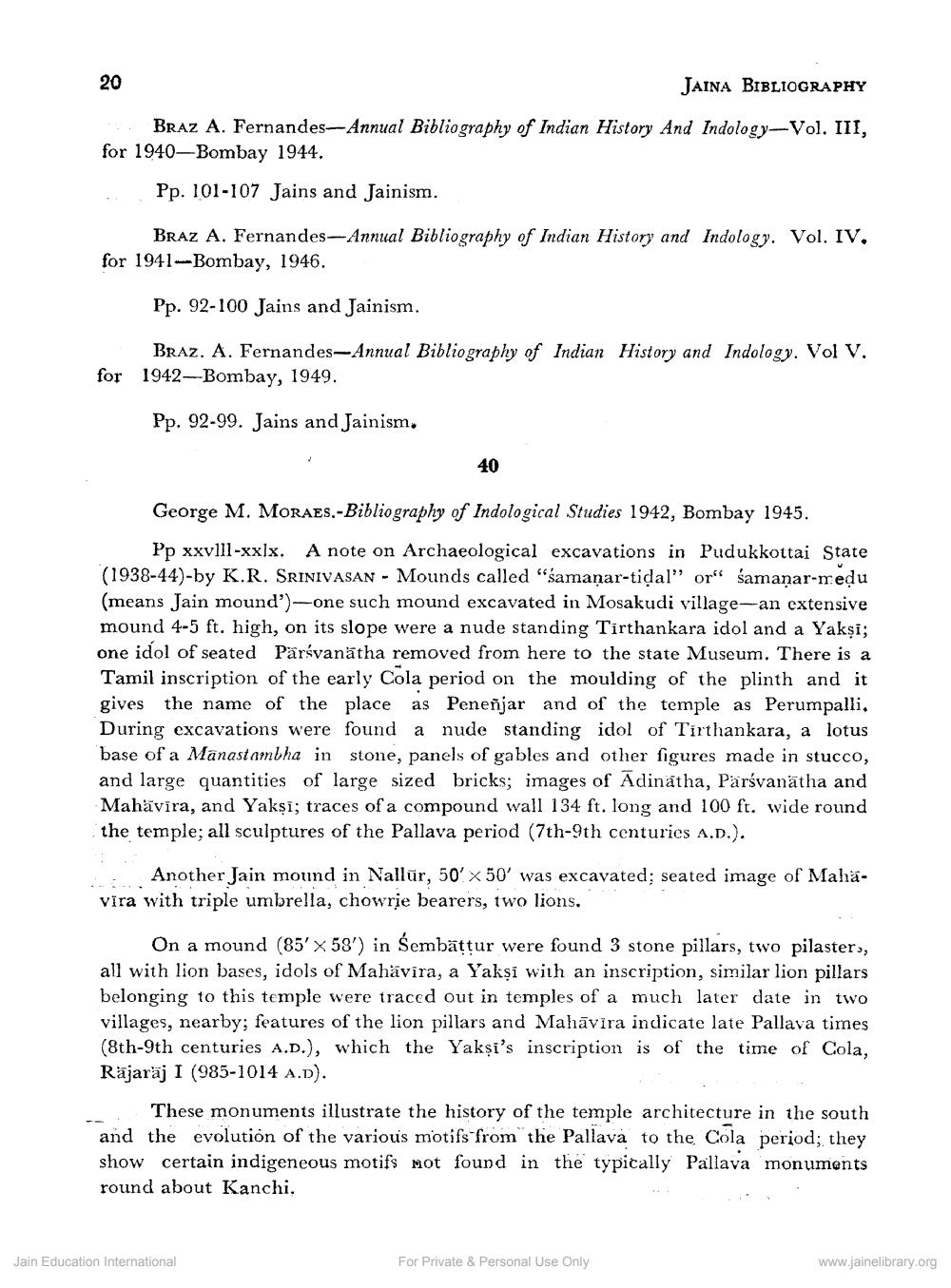________________
20
JAINA BIBLIOGRAPHY 2. Braz A. Fernandes--Annual Bibliography of Indian History And Indology-Vol. III, for 1940— Bombay 1944.
.
Pp. 101-107 Jains and Jainism.
BRAZ A. Fernandes-Annual Bibliography of Indian History and Indology. Vol. IV. for 1941-Bombay, 1946.
Pp. 92-100 Jains and Jainism,
BRAZ. A. Fernandes-Annual Bibliography of Indian History and Indology. Vol V. for 1942--Bombay, 1949.
Pp. 92-99. Jains and Jainism.
40
George M. MORAES.-Bibliography of Indological Studies 1942, Bombay 1945.
Pp xxvlll-xxlx. A note on Archaeological excavations in Pudukkottai State (1938-44)-by K.R. SRINIVASAN - Mounds called "samaņar-tidal" ora samanar-n.edu (means Jain mound')--one such mound excavated in Mosakudi village-an extensive mound 4-5 ft. high, on its slope were a nude standing Tirthankara idol and a Yakşi; one idol of seated Pärsvanätha removed from here to the state Museum. There is a Tamil inscription of the early Cola period on the moulding of the plinth and it gives the name of the place as Peneñjar and of the temple as Perumpalli, During excavations were found a nude standing idol of Tirthankara, a lotus base of a Manastambha in stone, panels of gables and other figures made in stucco, and large quantities of large sized bricks; images of Adinatha, Parsvanātha and Mahävīra, and Yaksī; traces of a compound wall 134 ft. long and 100 ft. wide round the temple; all sculptures of the Pallava period (7th-9th centuries A.D.).
Another Jain mound in Nallur, 50' x 50' was excavated; seated image of Mahavira with triple umbrella, chowrie bearers, two lions.
On a mound (85' X 58') in Sembăttur were found 3 stone pillars, two pilaster, all with lion bases, idols of Mahävira, a Yakṣi with an inscription, similar lion pillars belonging to this temple were traced out in temples of a much later date in two villages, nearby; features of the lion pillars and Mahāvīra indicate late Pallava times (8th-9th centuries A.D.), which the Yakşi's inscription is of the time of Cola, Rajaraj I (985-1014 A.D).
These monuments illustrate the history of the temple architecture in the south and the evolution of the various motifs from the Pallava to the Cola period; they show certain indigeneous motifs mot found in the typically Pallava monuments round about Kanchi.
Jain Education International
For Private & Personal Use Only
www.jainelibrary.org




